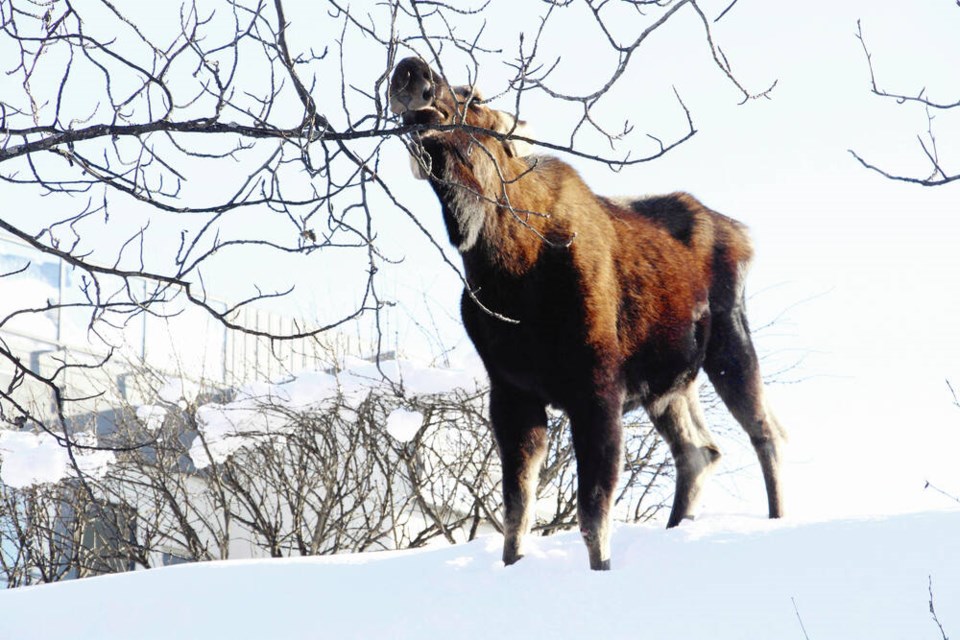Many years ago on my obligatory post-high-school trip to Europe, I chatted with a man in one of the many small villages of England’s south coast. When he learned I was from Canada, he asked me, without a trace of irony in his question, if we had much trouble with the bears and the wolverines in our area.
“Only when they try to climb on our city buses,” was my snappy reply and for half a second I couldn’t tell if he believed that or not before we had an earnest discussion about the Great White North.
That moment made me think about the close calls I’ve actually had with wildlife on the road. And to be fair, especially as spring approaches, it’s something drivers should actually keep in mind, particularly on our highways.
Between 2000 and 2014, 474 people were killed in wildlife collisions on our roads and the toll on the animal population must be in the tens of thousands during that same time.
Besides humans, what’s the most dangerous animal on our roads? The moose — accounting for 48.9% of road fatalities resulting from wildlife-vehicle collisions, according to the Canadian Traffic Research Industry Foundation. Deer come in second place at 24%.
ICBC stats show that there have been 10,700 vehicle versus wildlife incidents in B.C. in the past five years alone and I’ll bet that number is low as many of these events go unreported.
During that time 489 persons were injured in these wildlife collisions and if you’re strictly a numbers person, the claims payouts dealing with all of this amounted to $41 million, according to our public insurer.
Late spring is the worst time for wildlife encounters. Animals rise from winter hibernations and begin their yearly migrations and the flat gradients along highway infrastructure make those journeys easier. Wildlife loves the night, so you are most likely to be involved in a wildlife collision between 9 p.m. and midnight.
Unfortunately, roadside shoulders often have low grasses and shrubs which are favourites for deer and moose. Another animal favourite — salt — is also in abundance near roadsides after the spring thaw.
Preventing a wildlife collision is challenging but there are still some important things to consider.
Like every other road-safety prevention strategy, you can make things safer simply by going slower. They put those animal crossing signs in certain areas for a reason and I’m sure the wildlife don’t read them.
Animals travel in packs, herds and gaggles. When one crosses a highway there is often one or more bringing up the rear.
According to the CTRIF, the greatest danger to motorists is not actually the collision with an animal itself. Most people die in these incidents manoeuvring to avoid wildlife, then lose control of their vehicle — often rolling over or hitting an oncoming vehicle head-on.
With the exception of the moose, most experts advise to avoid swerving. Try to stop as fast as possible but hit the animal straight on.
The moose, though, is essentially a freight train on four legs. Their massive bulk coming over top of a car’s hood then through the windshield is often disastrous. Experts recommend aiming for their rear flank if a collision is unavoidable.
Hard stuff to think about, but protecting you and your passenger’s lives is a driver’s first duty.
Glove Box: Last week a reader wondered about the procedure used at a three-way stop intersection. These can be confusing. They’re uncommon and they usually involve vehicles needing to make a turn because they are often at “T” intersections.
The basic rule at any intersection where stop signs require vehicles coming from every direction to stop before they proceed again is: First in. First out.
Next, just like a four way stop, if you arrive at approximately the same time as another vehicle, you yield to the person on your right.
If two vehicles arrive at about the same time and are facing each other, but one driver wants to turn left, the left turn vehicle should yield to the driver who is proceeding straight through.
The best safety method here generally is not to try and prove you’re right by being aggressive, even if the rule is on your side. Make eye contact and wave the other driver on if there’s doubt.
Where this can be really complicated is when there is a standard four way intersection but only three stop signs. I don’t like those, but usually the absence of a stop sign on one of the corners means there is a lot more traffic coming from that direction and the engineers want to keep things moving.
So if your stop sign has a tab on it saying “3 Way,” the vehicle with no stop sign has the right of way.
>>> To comment on this article, write a letter to the editor: letters@timescolonist.com



